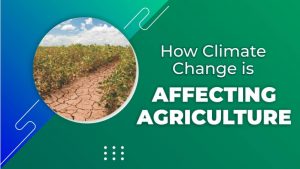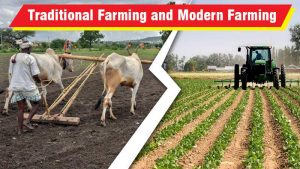Farmers all across the world are aware that a great harvest involves time, money, and commitment to the land. It also calls for an understanding of knowledge that can only come from experience and the examination of data from previous years. Farmers can enhance their yields each harvest season by making well-informed decisions throughout the year by knowing which agronomic practices to use.
Introduction:
Agronomy is a science and a profession that examines agriculture from a comprehensive, integrated viewpoint. In agronomy, it’s critical to comprehend the characteristics of the soil and how the soil interacts with the crop in growth, as well as the nutrients (fertilizers) that the crop requires and when and how to apply them. It’s also crucial to comprehend how crops grow and develop, how the climate and other environmental factors affect crops at all stages, and the most effective ways to control weeds, insects, fungi, and other crop pests.
Everyone is impacted by agronomy every day. Agronomy and the labor of agronomists are responsible for the food you eat, the coffee you drink, the ethanol-based petrol in your automobile, the grass on the golf course, and the natural fibers of the garments you wear.
One of the primary branches of agriculture is agronomy, which also includes the fields of soil science, crop physiology, plant ecology, agricultural chemistry, and economics.
- Crop physiology is the study of fundamental biological functions and various plant organs to comprehend nutrition and other input requirements.
- Plant ecology is the study of the surroundings of the crops and aids in our understanding of how various environmental conditions, such as temperature and precipitation, affect the crops.
- Agronomists examine chemical compositions and the corresponding changes that take place throughout the production, preservation, and use of crops and farm animals with the use of agricultural chemistry.
- A plant’s body goes through a variety of biochemical processes, and biochemistry is a useful tool for understanding how these processes work and the essential elements that help them along.
- In order to make it easier to modify the soil environment, soil science provides the agronomist with the instruments needed to comprehensively analyze the physical, chemical, and biological aspects of soil.
- The management of the profit and loss analysis in agricultural production and animal management is assisted by economics.
Food Crops In Agronomy:
In terms of agronomy, food crops and feed crops are distinct. Along with processed goods made from vegetables and grains, these are the crops we are most accustomed to seeing in the produce aisles (oils, starches, proteins, and flours). The three crops that occupy the most cropland in the United States are wheat, soy, and corn, as can be seen from the data below. However, the majority of the wheat you purchase is used to make items like bread, pasta, and other foods. The same is true for soy and corn.
For farmer’s markets, many people imagine that vegetable crops are grown on tiny farms. In fact, huge, specialized farms are where the majority of veggies are grown. To make the work easier, they have a variety of machinery that has been specially made. Farms may be dispersed over numerous states and many fields may total hundreds of acres. By doing this, a consistent supply of fresh produce is ensured for the market.
Soil Conservation:
Agronomists also create strategies to protect soil and lessen the effects of water and wind erosion. For instance, contour ploughing is a method that can be used to stop soil erosion and save water. Agronomists are also looking for better ways to use the soil to address other issues. These issues include how to properly dispose of human and animal waste, pollute the water, prevent pesticides from building up in the soil, and protect the soil for future generations by burning paddocks following crop harvest. No-till farming, planting soil-binding grasses along steep slope contours, and employing contour drains with a depth of up to one meter are all examples of pasture management practices.
Roles and Responsibility of Agronomists:
Crop physicians refer to agronomists because of the extensive range of work they conduct to ensure the health and well-being of crops grown for food, fuel, and land reclamation. Scientists who specialize in the study of plants and soil are known as agronomists. They work to improve crop output, seed quality, and nutritional content of crops as well as to solve issues facing the agricultural business. They are specialists in the science of managing soil for crop production, land reclamation, and enhancing the nutritional content of crops. Agronomists carry out experiments and are concerned with applying the rules of managing the land and growing crops in fields.
They carry out research to improve soil fertility and create the most effective techniques for raising agricultural productivity and quality. The primary responsibilities of an agronomic include determining the optimal use of the land following statistical analysis of data, measuring soil salinity, and determining nutrient levels for planting crops.
Agronomists inspect crops for any indications of disease, insect or pest problems, weed problems, or soil issues. They use critical thinking to find solutions to issues relating to planting, growing, harvesting, and safeguarding crops from pests, weeds, and harsh climates. With their broad knowledge of agriculture, crop science, chemistry, biology, ecology, earth science, genetics, and economics, agronomists collaborate with farmers to conduct experiments and assist in growing the finest possible crop. To determine how to enhance the crop of the future, they assess the crop data that has been obtained.
What is sustainable Agronomy?
Growing sufficient, nutrient-rich, and reasonably priced food for a growing global population while preserving the environment is how we define secure and sustainable food production.
On earth, there are billions of individuals. They require food production that protects the security of the environment. These resources could include soil, water, and more. By 2050, the population is anticipated to be close to 10 billion1. We must identify the procedures and answers that protect resources and provide for future generations.
The foundation of the Green Revolution was agronomists. To create new crop types, they used the most recent genetics and agricultural research. These exceptional crops have advantageous genetic characteristics that made them disease-resistant and tolerant to various growth environments. Additionally, they benefited from modern agricultural practices adopted by farmers in the US and other countries.
KhetiGuru provides you with all detailed information about farming methods, and other agricultural activities. To know complete details about farming install the Khetiguru application. For tractor, tractor price, tractor news, and all the latest updates install the KhetiGaadi application.




